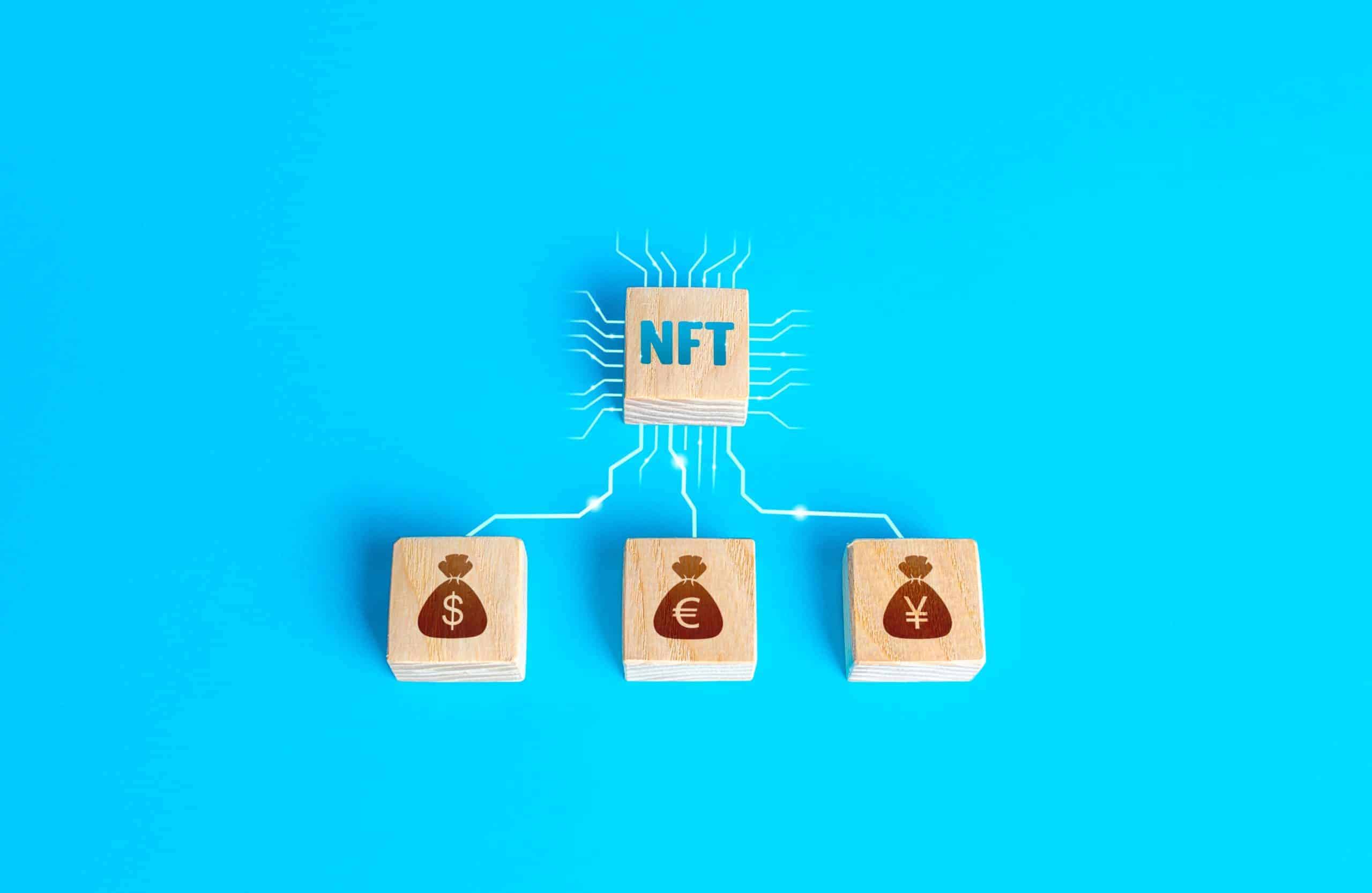Non-fungible tokens (NFTs) are the latest vogue in the digital technology world, rocketing up to mainstream awareness when Christie’s sold an NFT representing artwork by digital artist Beeple for US$69.3 million in March 2021. Similarly, NBA Top Shot reached mainstream consumers by selling crypto-collectibles packs for as low as US$9. NFT marketplaces like Nifty Gateway and OpenSea are riding the wave and achieving record trading volumes for their multi-million dollar marketplaces. By using the same blockchain technology as cryptocurrencies, NFTs are essentially a unique and transferable record on a digital ledger representing a set of rights over something outside of the blockchain, such as works of art, music and other collectibles.

Market participants should not assume that NFTs are beyond regulatory oversight just because they are relatively new and innovative. In fact, NFTs have already given rise to recent private litigation, such as the purported class-action lawsuit filed this month alleging that NBA Top Shop Moments are securities within the meaning of U.S. securities law. Most particularly, the existing U.S. and global regulatory framework over antiquities, art and digital assets, especially concerning anti-money laundering (AML), has recently expanded. Given the potentially high costs of non-compliance, market participants involved in the buying and selling of NFTs, such as art dealers and brokers, would be well-served to assess what may be at stake when navigating these relatively uncharted waters.

Are NFTs antiquities or artworks?
U.S. anti-money laundering laws have recently been expanded to apply in some instances to dealers of antiquities and artistic works. A key — and as yet unanswered — question is whether these laws will extend to NFTs representing rights in antiquities and artistic works.

It is common knowledge that traditional financial institutions such as banks and money transmitters are heavily regulated by the government to prevent money laundering. For this reason, many money launderers have historically resorted to trading valuable art and antiquities to avoid detection. This is especially true because the fair price of a piece of art or antiquity is hard to determine and easy to inflate, and there is often heightened privacy surrounding such transactions. These considerations were specifically taken into account by the Senate’s subcommittee on investigations when it published a report in July 2020 titled “The Art Industry and U.S. Policies that Undermine Sanctions.”
To address these concerns, the U.S. government recently enacted several anti-money laundering provisions in the omnibus National Defense Authorization Act (NDAA), which came into effect in January 2021. The NDAA includes updates and reforms to several anti-money laundering laws, including the Bank Secrecy Act (BSA), the Anti-Money Laundering Act (AMLA), and the newly enacted Corporate Transparency Act (CTA). While targeting money laundering generally, this legislative package is particularly noteworthy for its novel application to the art and antiquities markets.
The Bank Secrecy Act was passed by the U.S. Congress in 1970, with the aim of preventing persons from using U.S. financial institutions to hide or launder money. Among other things, the BSA requires U.S. financial institutions to register as money transmitters, implement AML and know-your-customer policies, maintain records of transactions, and report threshold transactions and suspicious activities.
The Anti-Money Laundering Act expanded the Bank Secrecy Act to apply to any “person engaged in the trade of antiquities, including an advisor, consultant, or any other person who engages as a business in the solicitation or the sale of antiquities.” Thus, under AMLA, antiquities professionals may have obligations to comply with a multitude of anti-money laundering requirements.
These laws notably do not define the term “antiquities” nor provide any guidance on how to distinguish antiquities from art more broadly or on whether there might be circumstances where these concepts would overlap. While a digital NFT is obviously much different from an antiquity as that term is ordinarily understood, because “antiquities” is undefined, it is possible that enforcing agencies or the courts perceiving money laundering concerns could try to shoehorn in NFT trades and deem those trades to amount to the solicitation or sale of antiquities and therefore within the ambit of the Anti-Money Laundering Act.
It is possible that enforcing agencies or the courts could deem the NFT trade to amount to the solicitation or sale of antiquities and therefore within the ambit of the Bank Secrecy Act.
The art trade is treated somewhat differently by these new laws, with various agencies in the U.S. Government currently being tasked with assessing how the trade facilitates money laundering and terrorist financing. This assessment includes exploring whether regulations should be limited only to high-value art; whether there is a need to identify beneficial purchasers of art, intermediaries and dealers; and how this new regime can be deployed in criminal, tax and regulatory investigations. It is likely that federal regulations due to be published by Jan. 1, 2022 will shed additional light on these questions, but for now, the art industry remains in a state of uncertainty.
In the meantime, it is noteworthy that the Financial Crimes Enforcement Network, or FinCEN (the arm of the U.S. Treasury Department with primary authority for enforcing Bank Secrecy Act requirements) issued a notice to financial institutions in March 2021 describing its view of the Anti-Money Laundering Act’s application to the trade of antiquities and art. The notice already signals an attempt by FinCEN to aggressively expand its new powers over the art world. Blurring the line between the concepts of antiquities and art, the notice warns about situations where both antiquities dealers and art dealers will have a duty to comply with the BSA, including by filing Suspicious Activity Reports (“SARs”). Again, there is no guidance as to whether or how this regime will apply to actors in the NFT space.
The newly enacted Corporate Transparency Act (CTA) adds yet another layer to the U.S. Government’s new anti-money laundering efforts. The CTA is designed to identify the “real owner” of many U.S. companies or foreign companies registered to operate in the U.S. by establishing and maintaining a national registry of beneficial ownership information. Subject to certain exceptions, the Corporate Transparency Act applies to business entities created or registered to do business in the U.S. with fewer than 20 employees. Failure to comply can result in significant civil and criminal penalties.
While most of the biggest auction houses already have voluntary anti-money laundering policies in place, they do not always conduct due diligence over the ultimate beneficiary of purchases. Thus, an individual could try to acquire artwork, antiquities or NFTs behind a series of shell companies to remain anonymous or avoid AML policies. Under the amended Bank Secrecy Act and Corporate Transparency Act, however, if an antiquities dealer informs FinCEN who the acquiring entity is, FinCEN would then be in a position to cross-check its CTA database to identify the real person in interest behind that entity. Once again, the application of the CTA to actors in the NFT space is unclear, leaving market participants at risk of aggressive enforcement theories by FinCEN and other regulators.
In sum, the new anti-money laundering infrastructure in the U.S. portends a coming wave of scrutiny of the cross-border market for art and antiquities. How NFTs will ultimately fit into this new regime is yet to be determined. Sellers, buyers and brokers in this space would do well to think proactively about how to put themselves in the best position when Uncle Sam inevitably comes knocking.
Are NFTs digital currencies?
On the other hand, what if NFTs end up being treated more like cryptocurrency than artwork or antiquities? The answer is that the National Defense Authorization Act may still apply. This new law expands reporting requirements to entities “engaged in the exchange of … value that substitutes for currency or funds,” making clear that “substitute for currency” includes virtual currency. The Anti-Money Laundering Act then extends onerous registration, reporting and recordkeeping requirements to businesses involved in transmitting virtual currencies. In fact, FinCEN has already acted against cryptocurrency exchanges for inadequate adherence to AML procedures.
Arguably, the unique features of an NFT (for example, they are by definition non-fungible and cannot be divided into smaller denomination), set them apart from virtual currency and other “substitutes for currency.” NFTs are not mutually interchangeable, cannot be divided, and cannot be traded at equivalency — they are non-fungible.
Like virtual currencies, however, NFTs are cryptographic tokens and arguably could be used to facilitate money laundering. The explicit goal of the NDAA is to prevent the laundering of illicit funds, and authorities could argue that applying AML requirements to NFTs would further this goal. In addition, the NDAA points to other non-fungible values, such as jewels. Given the propensity of U.S. regulators to try to expand their reach when given the opportunity, it seems likely that they will adopt whatever interpretation is convenient to bring NFTs within the new AML framework.
Cross-border risks for a borderless asset
NFT transactions can occur between counterparties located anywhere in the world. The global nature of NFT transactions means that NFT dealers should take care to account for U.S. Office of Foreign Assets Control (OFAC) regulations and other countries’ laws beyond those of the U.S. After all, persons may attempt to use NFTs as a means to evade sanctions or access virtual assets without using a compliant exchange, and the AMLA explicitly puts pressure on financial institutions to comply with cross-border investigations from other countries.
One of the most notable intergovernmental organization that establishes global policies to combat money laundering is the Financial Action Task Force (FATF). The FATF updated its guidance on virtual currencies in late March 2021, recommending a regulatory approach similar to that which governs traditional finance, including sanctions screening requirements, record-keeping and other forms of due diligence.
What makes this especially relevant to those in the NFT space is that the FATF defines virtual assets in broader terms than the NDAA, notably including anything that is a “digital representation of value that can be digitally traded or transferred and can be used for payment or investment purposes.” The relevant parties who would be regulated — the “virtual asset service providers” or “VASPS” — are also defined broadly, including anyone who conducts a transfer, safekeeping or administration of virtual assets on behalf of another person. By setting these global standards and calling on countries to adopt them, the FATF could lead many NFT market participants to be subject to regulation on a cross-border scale.
Navigating gray areas
As with most novel, legally uncharted corners of the market, the “new-ness” of NFTs means that there is no definitive answer regarding what types of regulations apply to marketplaces, private sellers or auction houses. The recent expansion of global regulations governing antiquities, art and virtual assets means that this new technology is at risk of being shoehorned into one of many pre-existing frameworks. Unfortunately, confusion like this is often resolved through “regulation-by-enforcement,” meaning that market participants may not receive meaningful guidance until it is too late.
Faced with such uncertainty, and in light of the high costs of non-compliance, NFT market participants would be wise to consider proactive measures and appropriate defenses in the event their activity is called into question.




